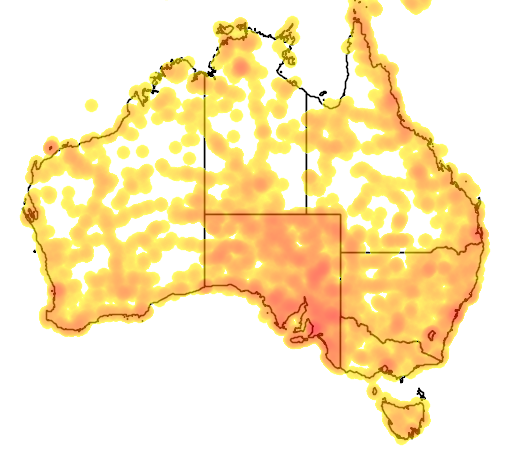|
Iridomyrmex Conifer
''Iridomyrmex conifer'' is a species of ant in the genus ''Iridomyrmex''. Endemic to Australia, it was described by Auguste-Henri Forel Auguste-Henri Forel (1 September 1848 – 27 July 1931) was a Swiss myrmecologist, neuroanatomist, psychiatrist and eugenicist, notable for his investigations into the structure of the human brain and that of ants. For example, he is considered ... in 1902. References External links * Iridomyrmex Hymenoptera of Australia Insects described in 1902 {{Iridomyrmex-stub ... [...More Info...] [...Related Items...] OR: [Wikipedia] [Google] [Baidu] |
Auguste-Henri Forel
Auguste-Henri Forel (1 September 1848 – 27 July 1931) was a Swiss myrmecologist, neuroanatomist, psychiatrist and eugenicist, notable for his investigations into the structure of the human brain and that of ants. For example, he is considered a co-founder of the neuron theory. Forel is also known for his early contributions to sexology and psychology. From 1978 until 2000 Forel's image appeared on the 1000 Swiss franc banknote. Biography Born in villa ''La Gracieuse'', Morges, Switzerland, to Victor Forel a pious Swiss Calvinist and Pauline Morin, a French Huguenot he was brought up under a protective household. At the age of seven he began to take an interest in insects. He went to school at Morges and Lausanne before joining the medical school at Zurich. Forel had a diverse and mixed career as a thinker on many subjects. At Zurich he was inspired by the work of Bernhard von Gudden (1824-1886). In 1871 he went to Vienna and studied under Theodor Meynert (1833-1892) but was ... [...More Info...] [...Related Items...] OR: [Wikipedia] [Google] [Baidu] |
Iridomyrmex
''Iridomyrmex'' is a genus of ants called rainbow ants (referring to their blue-green iridescent sheen) first described by Austrian entomologist Gustav Mayr in 1862. He placed the genus in the subfamily Dolichoderinae of the family Formicidae. It has 79 described species and five fossil species. Most of these ants are native to Australia; others are found in Asia and Oceania, and they have been introduced to Brazil, New Zealand, and the United Arab Emirates. Fossil species are known from China, France, and the United States. These ants are known to be an ecologically dominant and important group of ants, but they are sometimes regarded as pests because they disturb soil and enter human houses. Farmers in rural Australia place animal carcasses on meat ant ('' I. purpureus'') mounds as a method of disposing of them; meat ants consume the carcass and reduce it to bones in a matter of weeks. Meat ants also engage in ritualised fighting, which helps prevent casualties and solve te ... [...More Info...] [...Related Items...] OR: [Wikipedia] [Google] [Baidu] |
Australia
Australia, officially the Commonwealth of Australia, is a Sovereign state, sovereign country comprising the mainland of the Australia (continent), Australian continent, the island of Tasmania, and numerous List of islands of Australia, smaller islands. With an area of , Australia is the largest country by area in Oceania and the world's List of countries and dependencies by area, sixth-largest country. Australia is the oldest, flattest, and driest inhabited continent, with the least fertile soils. It is a Megadiverse countries, megadiverse country, and its size gives it a wide variety of landscapes and climates, with Deserts of Australia, deserts in the centre, tropical Forests of Australia, rainforests in the north-east, and List of mountains in Australia, mountain ranges in the south-east. The ancestors of Aboriginal Australians began arriving from south east Asia approximately Early human migrations#Nearby Oceania, 65,000 years ago, during the Last Glacial Period, last i ... [...More Info...] [...Related Items...] OR: [Wikipedia] [Google] [Baidu] |
Hymenoptera Of Australia
Hymenoptera is a large order of insects, comprising the sawflies, wasps, bees, and ants. Over 150,000 living species of Hymenoptera have been described, in addition to over 2,000 extinct ones. Many of the species are parasitic. Females typically have a special ovipositor for inserting eggs into hosts or places that are otherwise inaccessible. This ovipositor is often modified into a stinger. The young develop through holometabolism (complete metamorphosis)—that is, they have a wormlike larval stage and an inactive pupal stage before they mature. Etymology The name Hymenoptera refers to the wings of the insects, but the original derivation is ambiguous. All references agree that the derivation involves the Ancient Greek πτερόν (''pteron'') for wing. The Ancient Greek ὑμήν (''hymen'') for membrane provides a plausible etymology for the term because species in this order have membranous wings. However, a key characteristic of this order is that the hindwings are con ... [...More Info...] [...Related Items...] OR: [Wikipedia] [Google] [Baidu] |


